TechRadar Verdict
The Kandao QooCam 3 Ultra is a great 360-degree camera, but it's let down by the phone and desktop apps, which aren't as good as the competition. It's also more expensive, larger and heavier than the Insta360 X4. Image quality is great though, and overall usability is good, although working with photos can require a convoluted workflow, particularly when processing DNG files and taking advantage of the DNG8 feature.
Pros
- +
Fairly easy to use
- +
Dust and waterproof to 33ft / 10m
- +
Up to 8K video
Cons
- -
More expensive than the competition
- -
Desktop and phone apps could be better
- -
DNG photo editing is convoluted
Why you can trust TechRadar
Kandao QooCam 3 Ultra: one-minute review
Kandao has been making 360-degree cameras for some time now, and the Kandao QooCam 3 Ultra is by far the Chinese company's best 360-degree camera to date. It's an alternative and direct competitor to the highly rated Insta360 X4, and both are among the most interesting of the best action cameras currently available.
The GoPro Max 2 release has been delayed, but when it's finally released we expect this 360-degree camera to also offer up to 8K resolution to further expand the options available for fans of 360-degree shooting. But given this delay, and the fact that the QooCam 3 Ultra and Insta360 X4 are already available, it looks like GoPro could be in danger of missing the 8K boat.
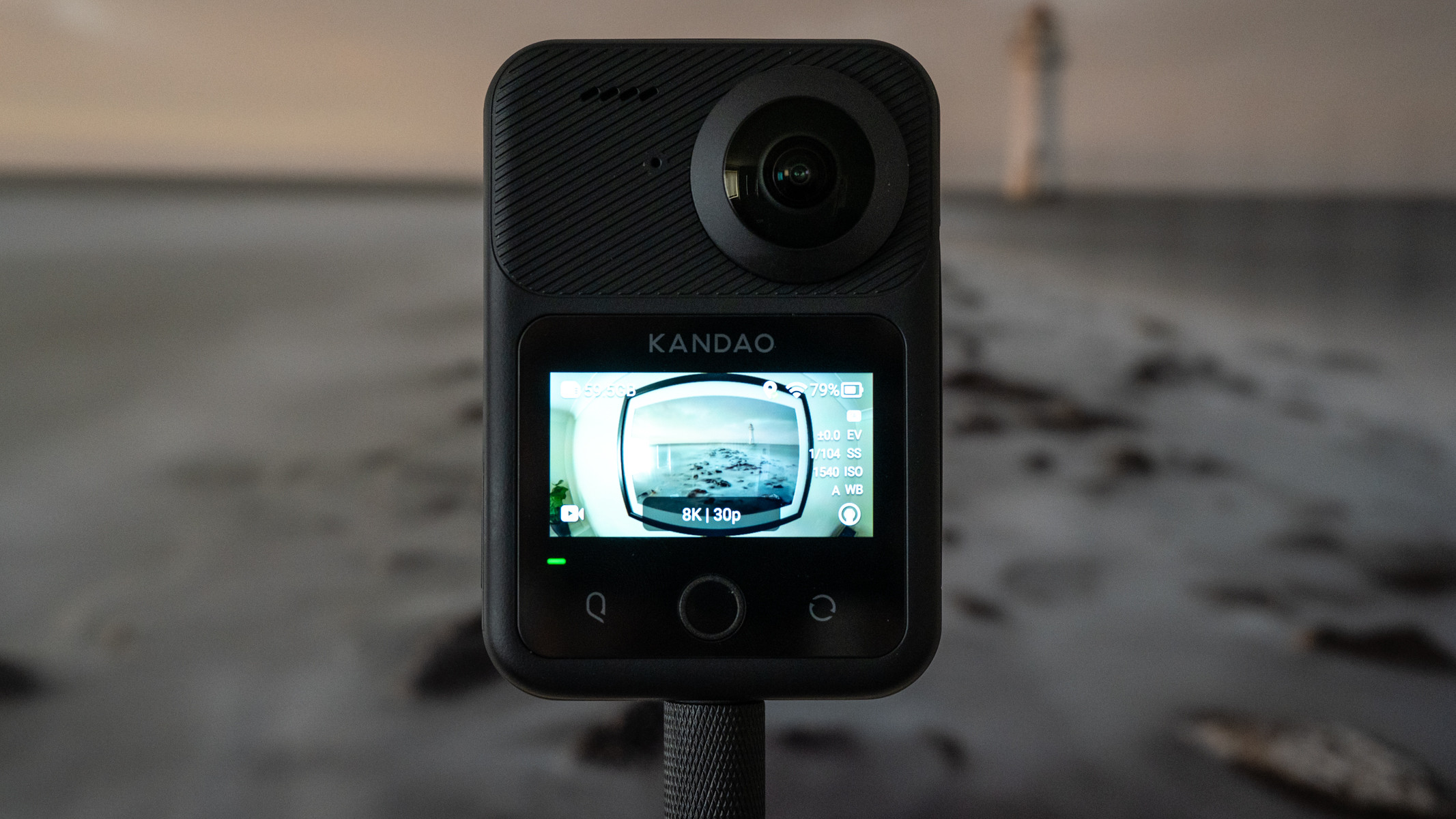
The QooCam 3 Ultra can capture video in several modes and resolutions up to 8K 30fps for 360-degree video and up to 4K 60fps in Single Lens Mode. Video can be captured in a standard 8-bit Rec. 709 profile or in 10-bit Rec. 2020 (HLG), with LUT support available in QooCam Studio. There's also a Dynamic Range Boost for HDR shooting; this limits resolution when shooting photos, but it's claimed to increase dynamic range by two stops.
This is a versatile action camera that offers IP68 dust and waterproofing to a depth of 33ft / 10m, has 128GB of internal storage alongside a microSD card slot, and can be controlled wirelessly using the QooCam 3 app. It's not a cheap 360-degree camera though, coming in at a higher price than its closest rival, the Insta360 X4.
Kandao QooCam 3 Ultra: release date and price
- Launched August 29 2024
- Costs $599 / £579 / AU$1,033
- Accessories available separately
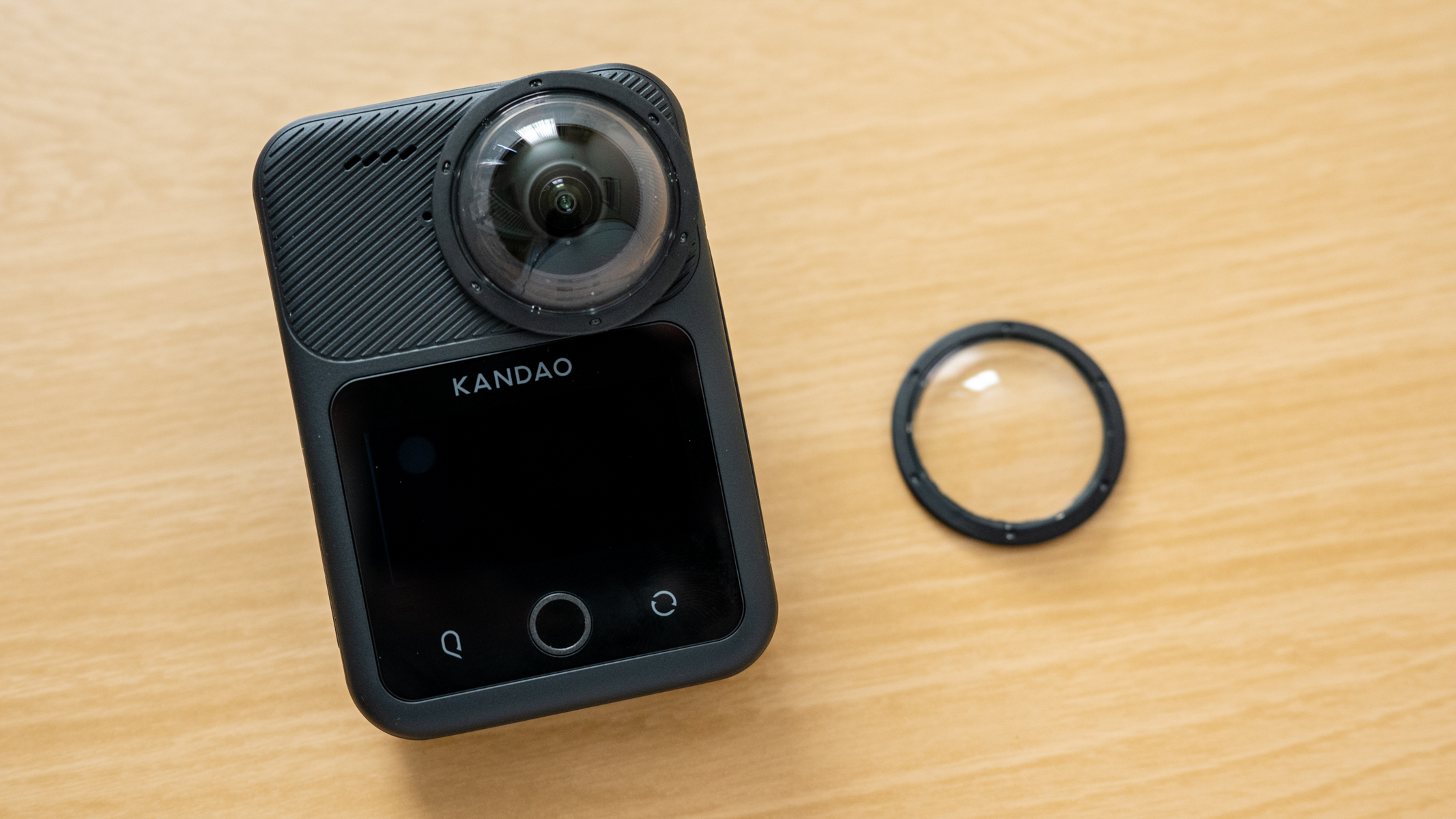
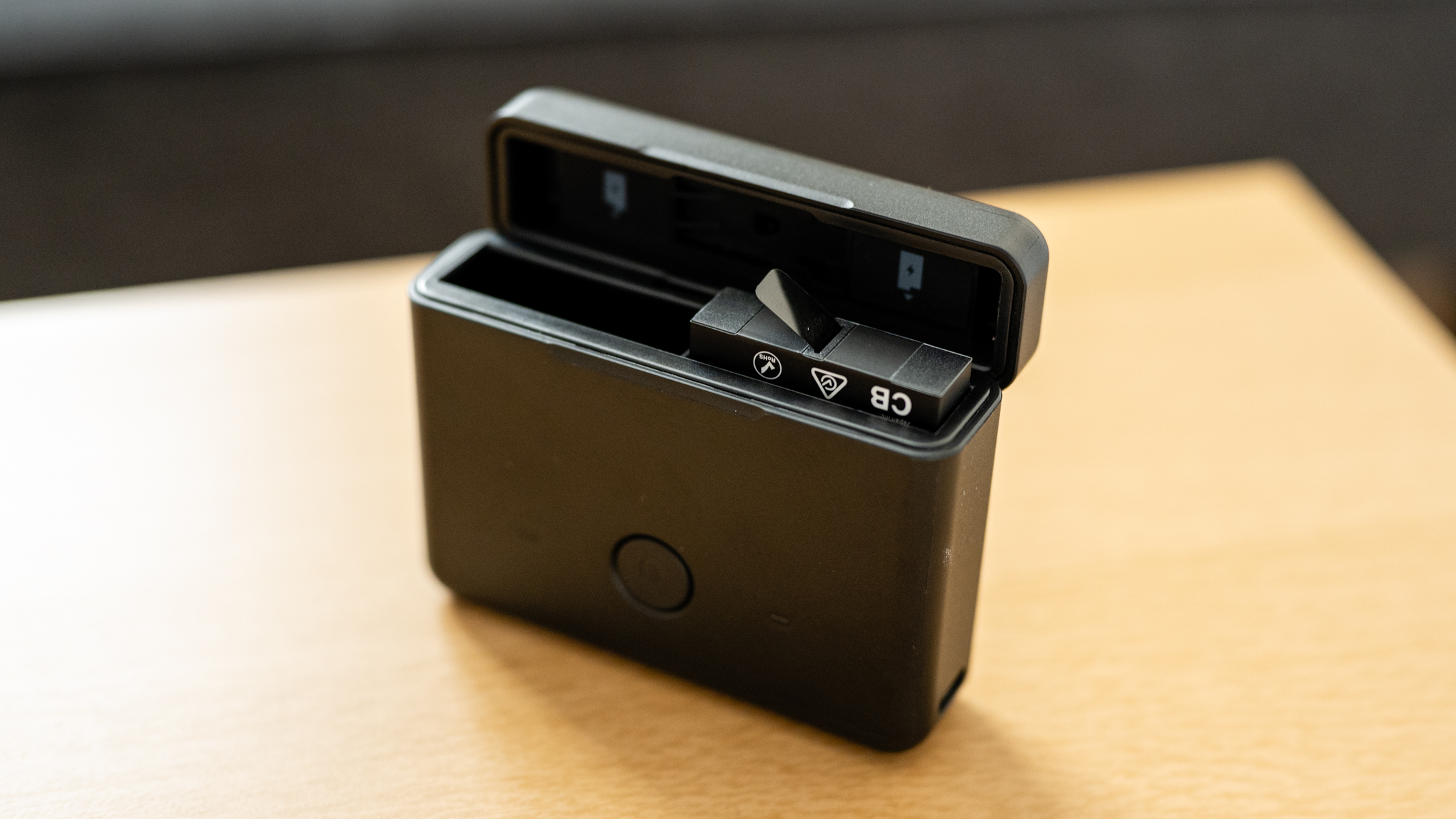
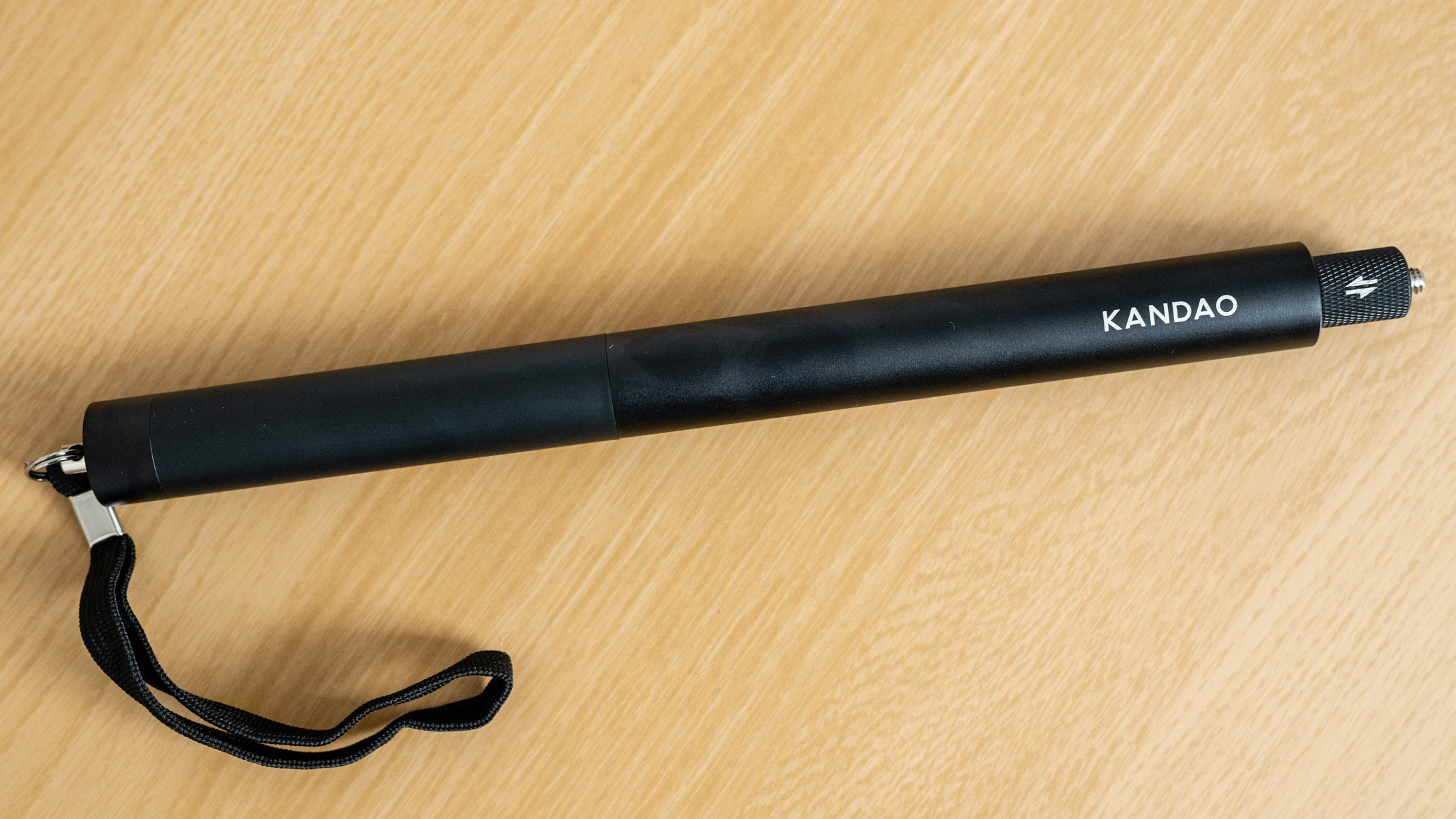
The Kandao QooCam 3 Ultra was released in August 2024 and is available now for $599 / £579 / AU$1,033. The camera is listed at USD$699 for Australian visitors to the Kandao website. This is considerably more expensive than the QooCam 3 and more expensive than the Insta360 X4 which cost $499.99 / £499.99 / AU$879.99 at launch.
At the time of writing, only the QooCam 3 Ultra base kit that includes the camera, battery, PD cable, lens cloth and soft case is the only option available, so accessories have to be purchased separately.
These include a battery charging case, spare batteries, selfie sticks, a car suction mount and detachable lens protectors. A selfie stick in the kit would be preferable because these are essential for 360-degree cameras.
- Price score: 3/5
Kandao QooCam 3 Ultra: specs
| Sensor | Dual 96MP 1/1.7-inch sensors |
| Video | 360-degree 8K up to 30fps, 5.7K up to 60fps, 4K up to 120fps, single lens up to 4K 60fps |
| LCD | 2.19-inch touchscreen |
| Video modes | Video, Dynamic Range Boost, Loop Recording, Interval |
| Connectivity | Wi-Fi 6, Bluetooth 5.2, USB-C |
| Memory card | MicroSD UHS-I V30 |
| Size | 2.81 x 4.06 x 1.04 inches / 71.5 x 103.2 x 26.6mm |
| Weight | 11.85oz / 336g (including battery) |
| Battery | 2280mAh |
Kandao QooCam 3 Ultra: design and handling
- Larger and heavier than the competition
- Waterproof to 33ft / 10m
- 1/4-inch screw thread
The QooCam 3 Ultra looks remarkably similar to the QooCam 3 but is both taller and heavier, at 11.85oz / 336g including a battery. This is undoubtedly still lightweight, but at 4.44oz / 126g heavier than the QooCam 3, that's quite a chunk of additional weight. It doesn’t affect handling or usability in most situations, but when attaching the camera to bike handlebar mounts, for instance, you have to be sure that your mount can adequately support the camera.
Build quality is excellent, and the camera certainly feels robust, with dust resistance and water resistance to 33ft / 10m – although as with all 360-degree cameras, the dual fisheye lenses on each side mean that you really wouldn’t want to drop it. Pop-on lens protectors are available separately, and stay attached well to protect from stray stones flying up and minor knocks.
The camera body is designed minimally with a power and mode button on the left, a shutter button below the 2.19-inch rectangular touchscreen, a customizable Q button, a button to change the camera view, and a 1/4-inch screw thread on the bottom. Most settings and functions are accessed by swiping from the top, bottom and sides of the screen, like most action cameras and 360-degree cameras, and this makes the QooCam Ultra 3 intuitive to use.


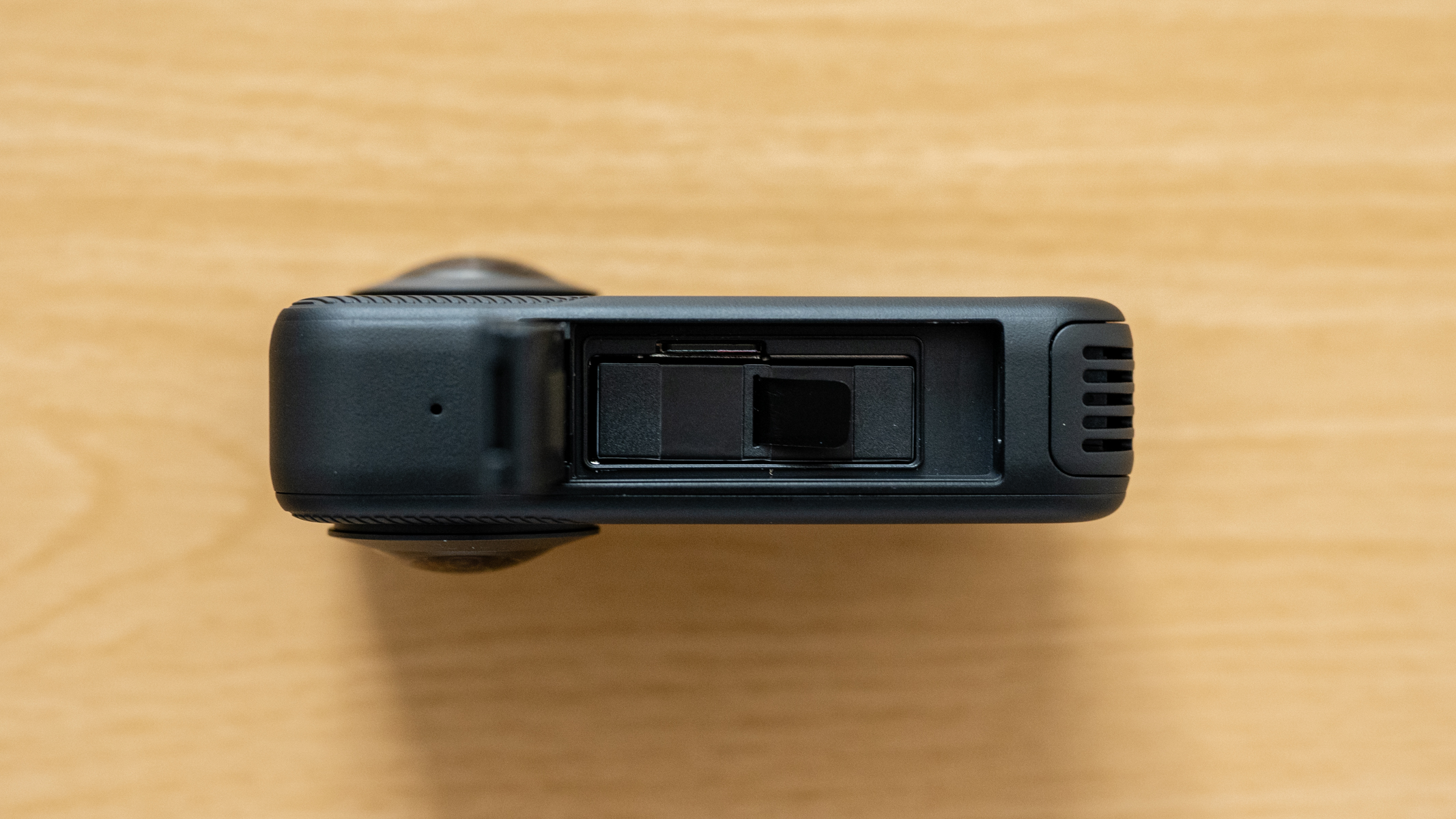
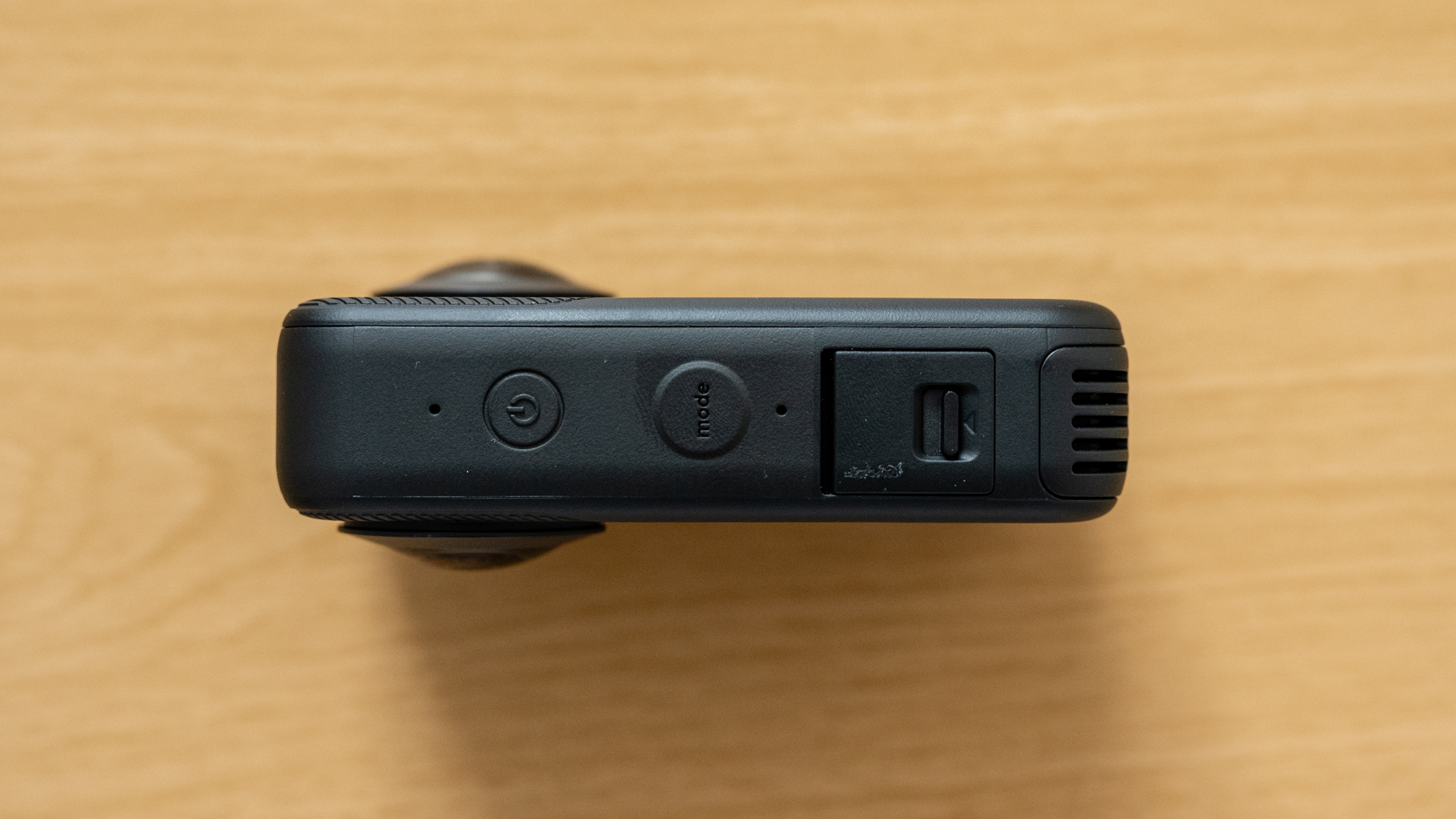
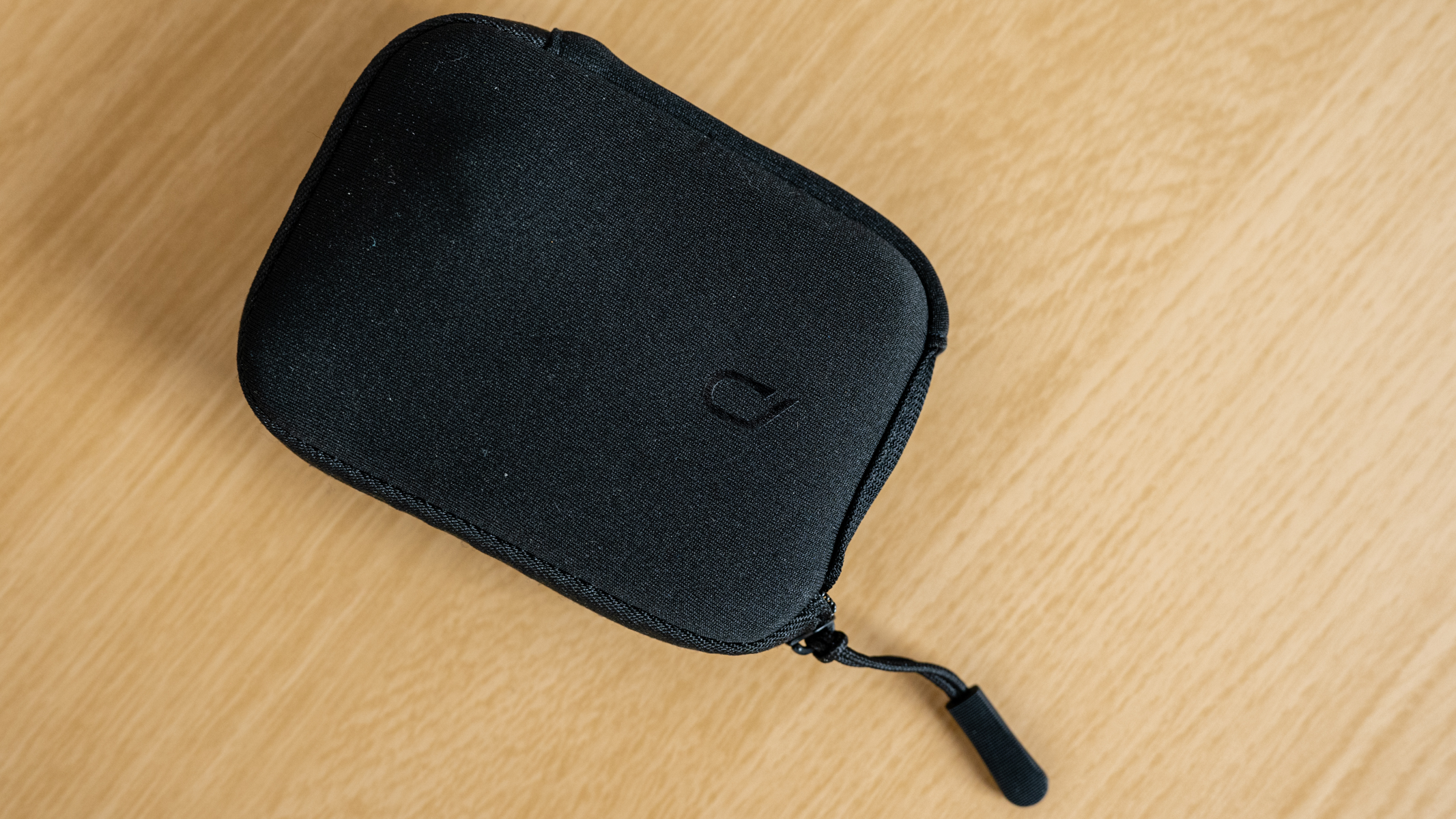
Using the camera without the phone app works well, but you can also attach it to the QooCam 3 app via WiFi 6 for wireless control. In terms of ports, there's a USB-C port under a waterproof door that can be used to charge the battery and transfer photos and videos on one side of the camera, while on the other is a door keeping the battery and microSD card slot, which can take cards up to 1TB, safe from water ingress. The latter is useful, but with 128GB of onboard storage, it's not always necessary to use a memory card.
In terms of battery life, forgetting anything that Kandao claims, I spent over an hour wandering around a city shooting 8K video, timelapse/hyperlapse videos and photos for well over an hour and hardly dented the battery – it only ran out days later after further shooting.
Of course, this wasn't continuous use, but in real-world terms, I wasn't disappointed. A second or even a third battery is still useful to ensure you can continue shooting when out for the day, and the battery charging case that's available separately makes charging easier, and provides storage for batteries when not in use.
- Design score: 4/5
Kandao QooCam 3 Ultra: features and performance
- Dual 1/1.7-inch Quad-Bayer sensors
- 96MP 360-degree photos
- 10-bit HLG video option
The key features of the QooCam 3 Ultra are pretty much tied into the hardware where the dual 1/1.7-inch Quad-Bayer sensors and the lenses with f/1.6 apertures and 9.36mm equivalent focal lengths take centre stage. 8K video is oversampled to improve image quality. Other features include 96MP 360-degree photos, 10-bit HLG, SuperSteady Stabilization, Spatial Audio, built-in GPS and Single Lens video capture.
Image Stabilization uses a 6-axis gyro and works well, but unless you walk with bent knees, the way that you have to with professional video gimbals, the bob of walking will be noticeable as can be seen in the example video. This was captured this way on purpose to discover whether improvements had been made on the QooCam 3, but both perform identically in this area.
The camera view on the camera LCD and in the app is also stabilized, unlike the QooCam 3 at launch, so you get much closer to what you’re going to get on-screen, which is an improvement. Although, with 360-degree cameras what you get predominantly comes down to reframing video in software.

QooCam Studio, which is Kandao's desktop editing software for photos and videos still lacks the slick and easy-to-use interface alongside some of the more exciting reframe options of Insta360 Studio. It's still fairly easy to use, and the QooCam 3 phone app still provides more functionality than the desktop version including the ability to use templates, although much work could be done to both to vastly improve them.
Sound quality from the four directional mics for spatial audio capture is pretty good, but don’t be fooled by the choppy sound you'll hear in the QooCam desktop app. Sound is massively improved, and is the way it should be, once videos have been exported. You can also attach external microphones via Bluetooth and USB-C; if sound is important, one of these will be essential to take advantage of the best sound quality possible and to reduce ambient noise.
Single Lens capture is another useful feature that allows you to capture video with one of the lenses rather than both – you can select the camera facing towards or away from you. This is ideal when you know that you simply want a single view and video can be captured in 4K up to 60fps or 3.4K at 100/120fps for slow motion footage.
You still need to run the footage through one of the apps where you can change the field of view – the view captured is square but is cropped to 16:9 with the Reframe Adjustment option. One point to note here is that you can’t actually reframe Single Lens videos because the viewpoint is fixed.
- Features and performance score: 4/5
Kandao QooCam 3 Ultra: image and video quality
- Up to 8K 30fps video
- Up to 96MP photos
- Slow motion capture
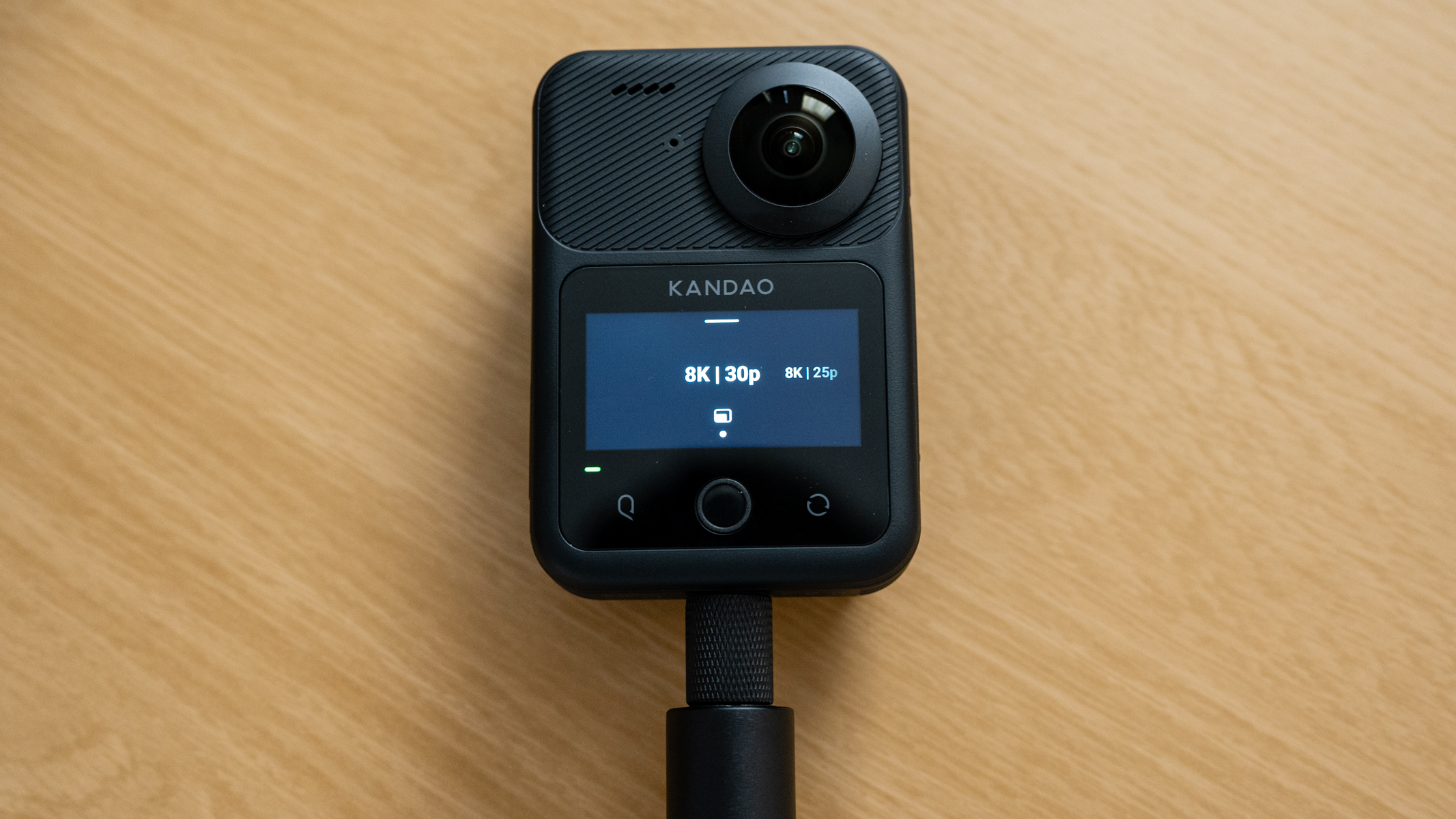
360-degree cameras sound almost unfathomable when you first think about them, but they're much less complicated than they sound and open up a wealth of creative possibilities. You can pan, zoom and change camera direction, allowing you to easily film yourself and the entire environment around you. Although an 8K resolution sounds excessive, this resolution covers 360 degrees and greatly improves image quality for 360-degree videos.
360-degree videos can be captured in 8K up to 30fps, 5.7K up to 60fps and 4K up to 120fps, so although 4K provides the ability to capture 360-degree slow motion, image quality is greatly diminished when compared to 8K. 8K file sizes are huge and even 5.7K are pretty hefty, so you do have to consider how much footage you intend to capture and think about whether or not the 128GB of on-board storage needs to be supplemented with a microSD card.
Reframed 360-degree video
Timelapse/hyperlapse
8K 360-degree videos and timelapse videos look great, although there can be a small amount of wobble where lens images are stitched so hopefully this can be improved. Overall image quality is great even with the Standard bitrate (100Mbps), but this can be improved by opting for High (150Mbps). Color profiles available include 8-bit Rec. 709 for in-camera processed footage or 10-bit Rec. 2020 (HLG).
The latter provides a much greater dynamic range with the ability to apply LUTs in QooCam Studio, with 11 LUTs preloaded and the ability to add your own. Unfortunately, there's no ability to dial down LUT strength, and there are no options available for making adjustments such as exposure, white balance, shadows or highlights to video.
When using the phone app you get a histogram to aid with exposure, but when shooting with just the camera in isolation, you only get an exposure warning where blue denotes shadow clipping and red highlight clipping. This is perfectly adequate and provides a quick and easy way to assess exposure.
Dynamic range isn’t great, so you have to watch your highlights, but Dynamic Range Boost for HDR shooting does increase dynamic range by two stops at the expense of photo resolution which is limited to 24MP. There is a noticeable difference between standard and Dynamic Range Boost images, and the processing of the latter is no heavier than the former. Video looks fine because you're forced into capturing in 10-bit Rec. 2020 (HLG) which is a flat profile and offers greater dynamic range.
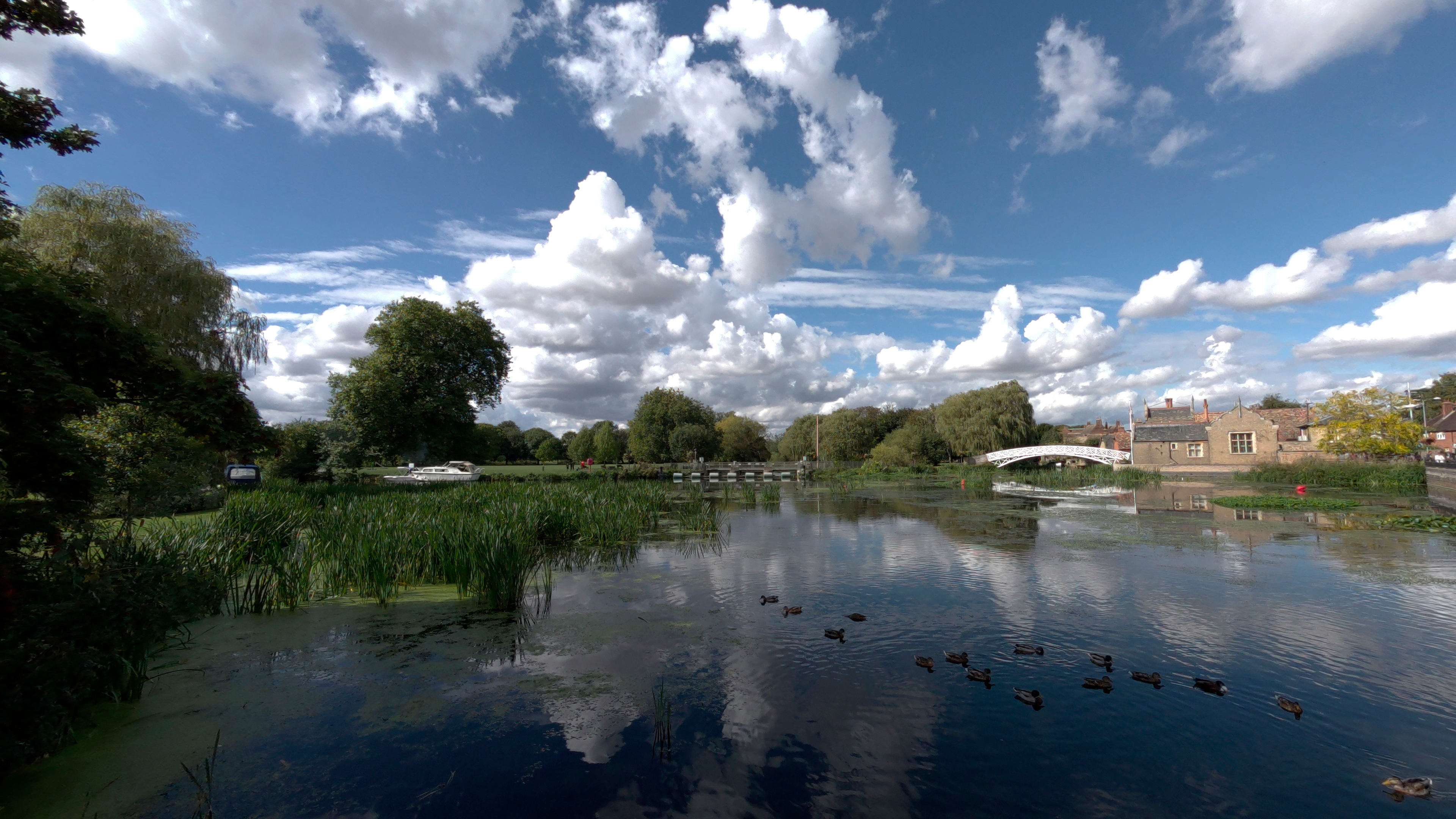



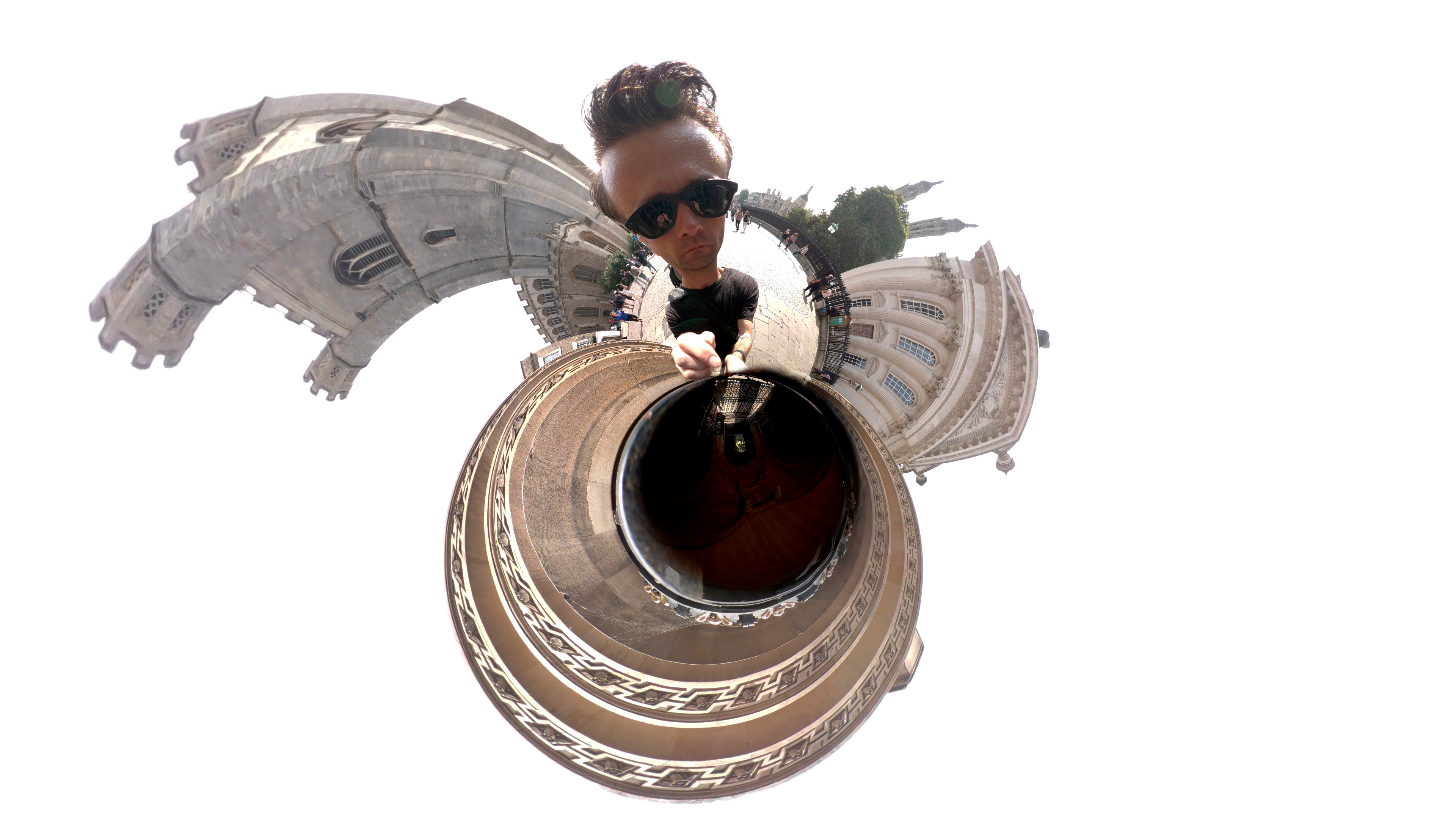

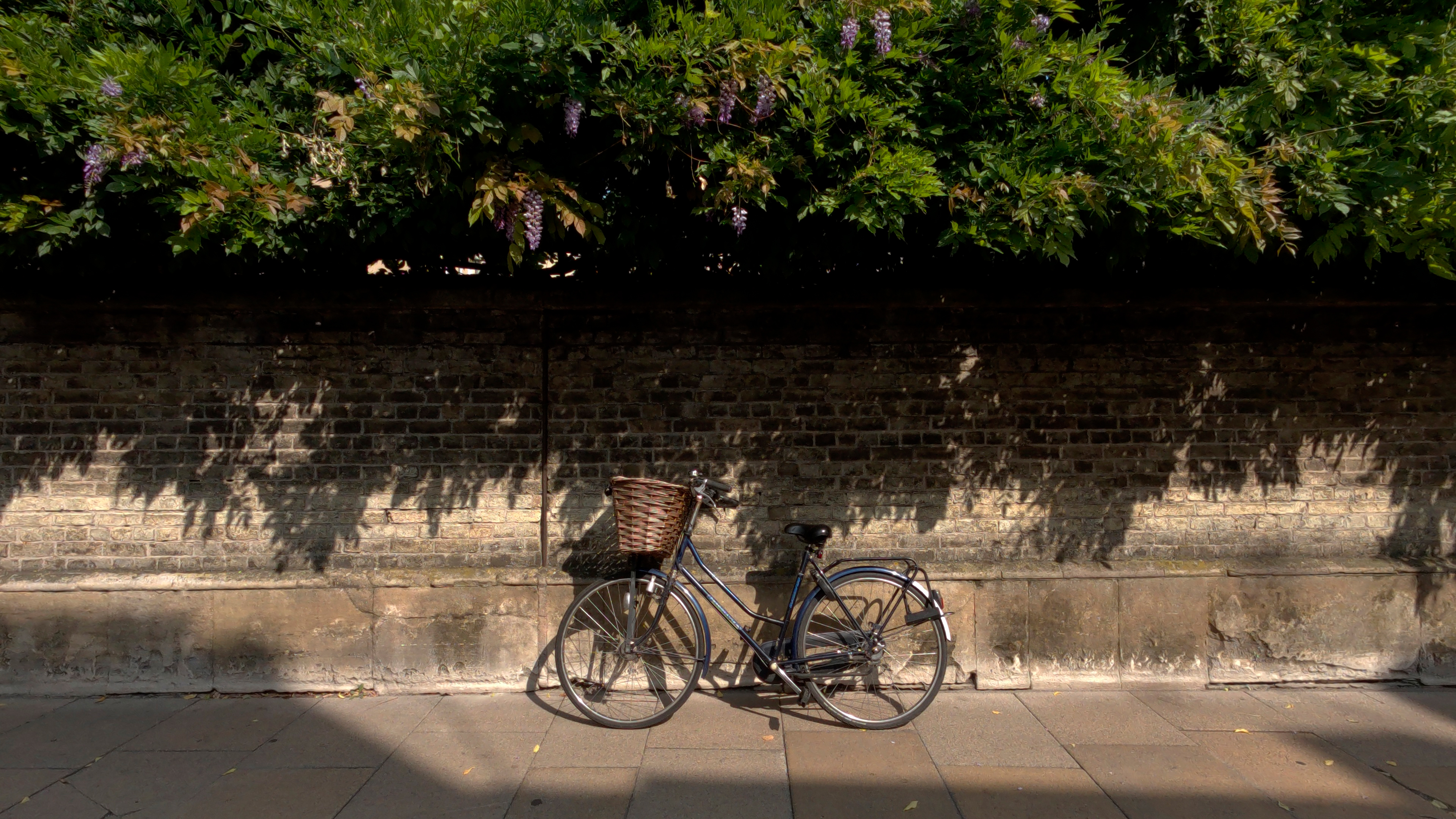
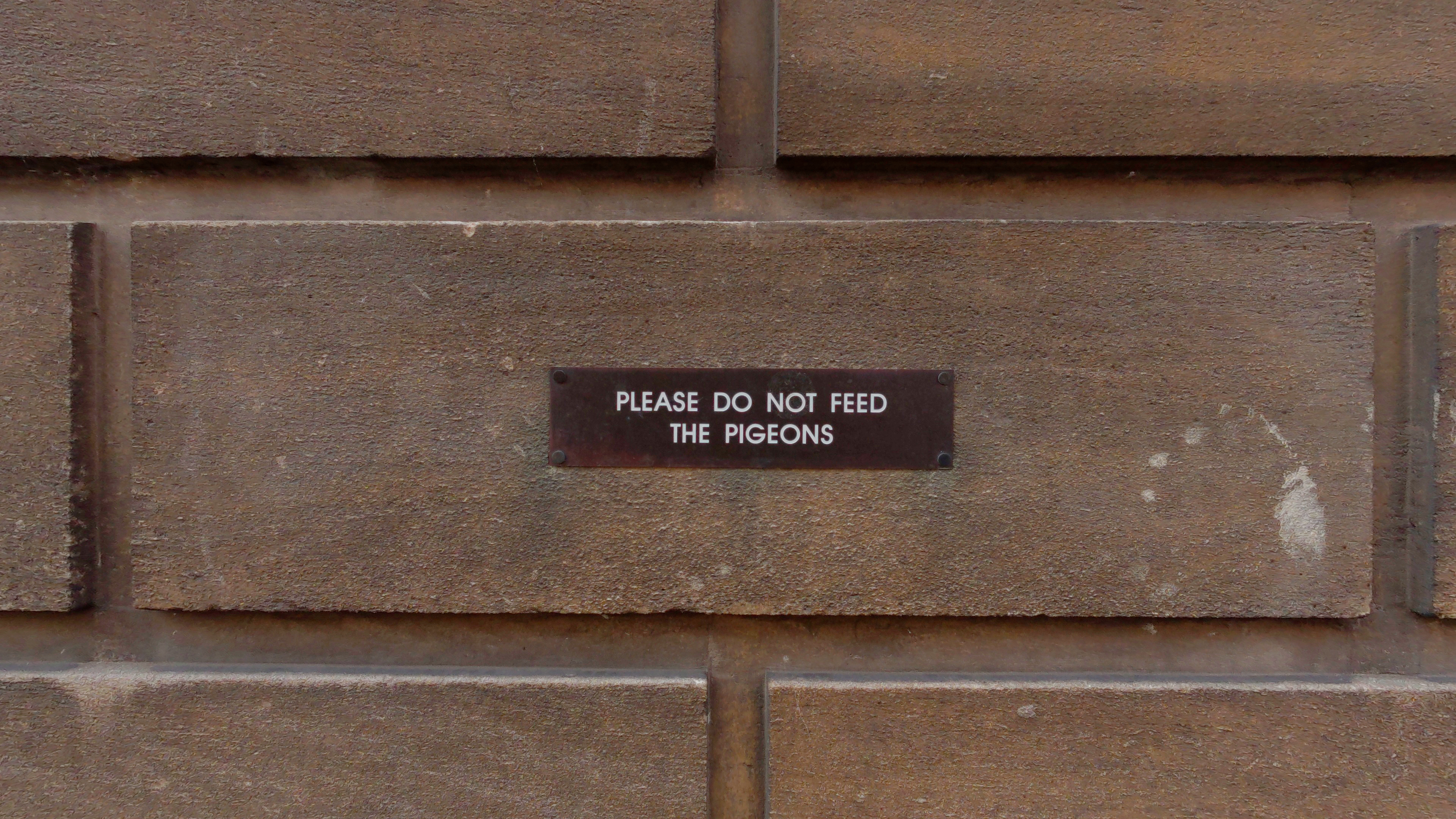


The best photo quality comes from the DNG8 shooting feature where eight DNG files are captured and then merged in the RawPlus software for increased detail, lower noise and extended dynamic range. The downside is that it's a convoluted process where you have to merge the eight DNGs into a single DNG in RawPlus, export, edit in Lightroom, export a JPEG and then reframe the JPEG in QooCamStudio before exporting a final JPEG.
Standard photo quality is pretty good with brighter conditions providing the best results like most action cameras and drones with small sensors. But when working with DNGs, you have to edit in Lightroom, export a JPEG and then reframe the JPEG in QooCamStudio before exporting again. This process hasn’t been improved since the QooCam 3, and it could and should be much more streamlined.
ISO handling isn’t bad for a camera of this type with such small sensors, and coupled with the f/1.6 apertures it's well suited to low-light shooting when the situation arises. I tested the camera at night in a dark location at ISO 6400, which is the highest setting available, and the results are useable but it's certainly not a setting you'd want to rely on too often. ISO 1600 is much more useable, but shooting at the lowest possible ISO is always preferable.
- Image and video quality score: 4.5/5
Kandao QooCam 3 Ultra: testing scorecard
| Attributes | Notes | Rating |
|---|---|---|
| Price | More expensive than the competition | 3/5 |
| Design | Excellent build quality but larger than the QooCam 3 | 4/5 |
| Performance | Multiple shooting options for photos and videos | 4/5 |
| Image and video quality | 8K video and 96MP photo quality is impressive | 4.5/5 |
Should I buy the Kandao QooCam 3 Ultra?
Buy it if...
You want to shoot 360-degree video
If you would like to shoot 360-degree video, the QooCam 3 Ultra will allow you to do this and the 8K maximum resolution produces great image quality.
You would like to be able to easily film yourself
360-degree cameras make it incredibly easy to film yourself using a single camera and without the need for a camera operator, which can simplify the process.
You'd like to be able to reframe photos and videos
The beauty of shooting 360-degree photos and videos is that you can reframe the viewpoint which provides a huge amount of creative freedom with a single camera.
Don't buy it if...
You're on a budget
The Insta360 X4 is less expensive and also offers up to 8K video capture alongside great features in the phone and desktop apps.
You'll only use Single Lens shooting
If you have no intention of capturing 360-degree photos and videos, whether to show in their entirety or reframed to a standard aspect ratio, this camera would be a waste of time for you.
You'd like a more compact 360 camera
The Insta360 X4 is both smaller and lighter than the QooCam 3 Ultra. For some this won’t be an issue, but smaller and lighter will be attractive for more action-oriented activities.
QooCam 3 Ultra: also consider
The Insta360 X4 is a smaller, lighter and less expensive 360-degree camera made by the market leader. It features 8K video, slow-motion video, a 4K single lens mode, excellent build quality, image stabilization and fun video modes.
Read our in-depth Insta360 X4 review

How I tested the Kandao QooCam 3 Ultra
- All features and functions tested
- Phone and desktop apps used for editing
- Image quality reviewed
The QooCam 3 Ultra was tested over several weeks shooting photos and videos in different conditions and locations to test all of the features and functions, alongside handling. With 360-degree cameras, shooting is only half the battle, so the second part of testing was running everything through the QooCam 3 smartphone app and the QooCam studio desktop app to put editing through its paces.
Approaching 360-degree image capture is extremely similar to, yet wildly different to capturing standard photos and videos. So, with this in mind, I was drawing on 30 years of photographic experience and 16 years of working as a photography journalist. Having used these types of cameras before I was aware of what to expect and what to look out for, but with any new product there's inevitably something new to discover.
First reviewed September 2024
James Abbott is a professional photographer and freelance photography journalist. He contributes articles about photography, cameras and drones to a wide range of magazines and websites where he applies a wealth of experience to testing the latest photographic tech. James is also the author of ‘The Digital Darkroom: The Definitive Guide to Photo Editing’.

